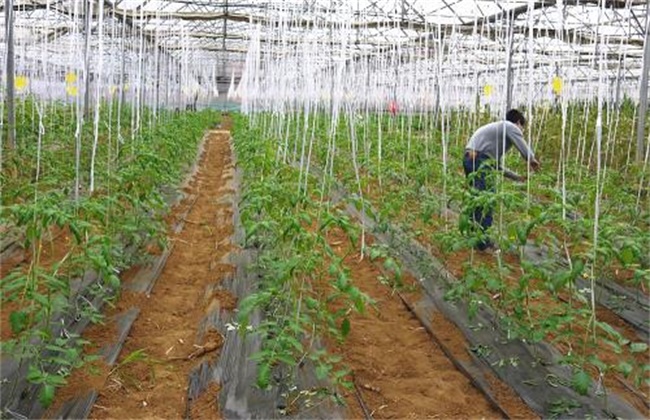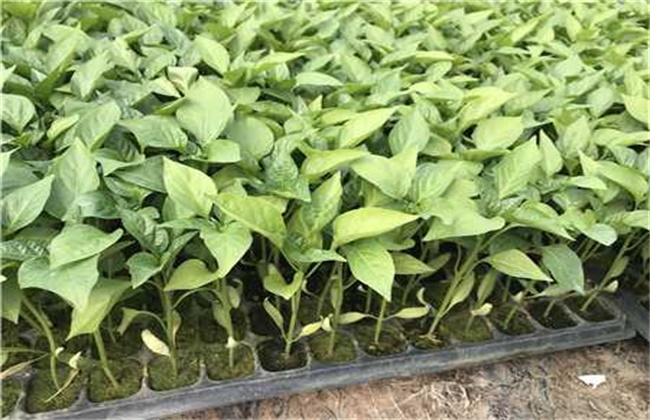Planting technique of interplanting Tomato with beans
Tomatoes are tomatoes in our daily life. The nutritional value of tomatoes is very high. Now tomato planting area is very large, and when planting tomatoes, in order to improve the utilization rate of land resources, many people will choose interplanting. There are many vegetables suitable for interplanting with tomatoes, among which beans are one of them. So how do tomatoes interplant with beans? The following small series will bring you tomato interplanting bean technology, let's have a look together!

1. Soil preparation and seed selection
The choice of plot is very important when tomato is interplanted with beans. We should choose flat terrain, good irrigation and fertile soil mainly. And the soil should not have been planted within three years of the role of solanaceae and melon beans. Then the soil is deeply ploughed, and fully decomposed farm manure is applied as base fertilizer per mu, combined with appropriate compound fertilizer, and then furrows are prepared for sowing. After doing the soil work well, it is necessary to choose a good variety. Tomato varieties should have good tolerance to low temperature, low light and disease resistance. Bean variety selection is similar to tomato selection, only in this way to ensure that both normal growth together.
2. Timely sowing
The sowing time of tomatoes and beans is different. When interplanting, we should first sow tomato seeds. Tomatoes generally start growing in August, then plant in September, and generally appear in February of the following year. And beans should be in early February when the seedlings, the seedling method is mainly based on plug seedlings, seedling age is generally about half a month. It can be directly interplanted among tomato plants, and can be harvested and marketed in April. Then in planting, but also pay attention to control the planting density, tomato and beans plant spacing should be maintained at about 50*45 cm.
3. Field management
When planting tomatoes, keep the temperature at about 28 degrees when the seedlings emerge. When more than 70% of tomato seedlings are unearthed, the mulch can be opened for ventilation. After the tomato cotyledons stretch, the temperature should be lowered to about 18 degrees. When two true leaves grow, the daytime temperature will increase to about 25 degrees, and the temperature difference between day and night will remain at 10 degrees for 2-3 weeks. When planting beans, the temperature should be kept at about 25 degrees before the seedlings are unearthed. After the seedlings emerge, the temperature should be raised by about 2-3 degrees and kept at about 15-18 degrees at night.
4, timely shelter
After the tomatoes and beans are all harvested and marketed, we have to do a good job in the shed. Seal all vents and outlets of the greenhouse to avoid air leakage, and do not need watering. After applying proper organic fertilizer, the soil is rotary tilled. The time of rest is usually in summer, because in summer, its temperature is very high. The temperature in the greenhouse can generally reach about 65 degrees, so if the high temperature is covered, it can kill the germs and pests in the greenhouse. so as to effectively reduce that occurrence of disease.
The above is a simple introduction to tomato interplanting bean planting technology. Today's introduction is here. This article is for reference only. I hope it can help everyone!
Related
- Where is it suitable to grow horseradish in China? it is expected to see the middle altitude horseradish in Alishan.
- How to prevent tomato virus disease reasonably? (Control methods included)
- Many people like to plant towel gourd on the balcony. What are the main points of this method and management?
- What crops can chili peppers be mixed with?
- Fertilization techniques and matters needing attention in Tomato
- What are the grafting techniques for peach seedlings in spring?
- Harm and control methods of root swelling disease of Chinese cabbage
- What are the pests of sweet potatoes? How to prevent and cure it?
- Symptoms, causes and Control methods of navel Rot in Tomato
- The cause of "Cucumber rotten bibcock" in Farmers' planting Cucumber and its Control Plan



